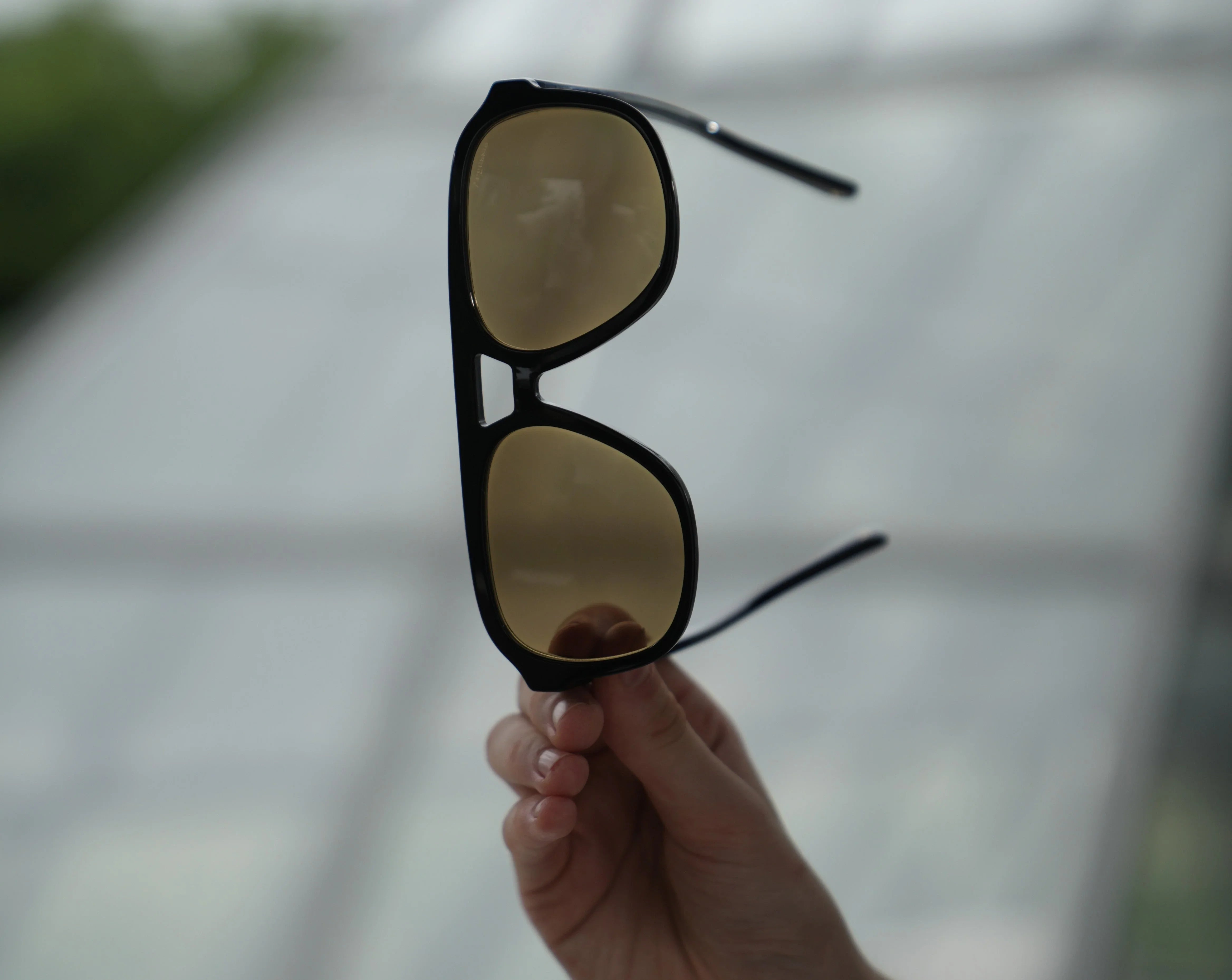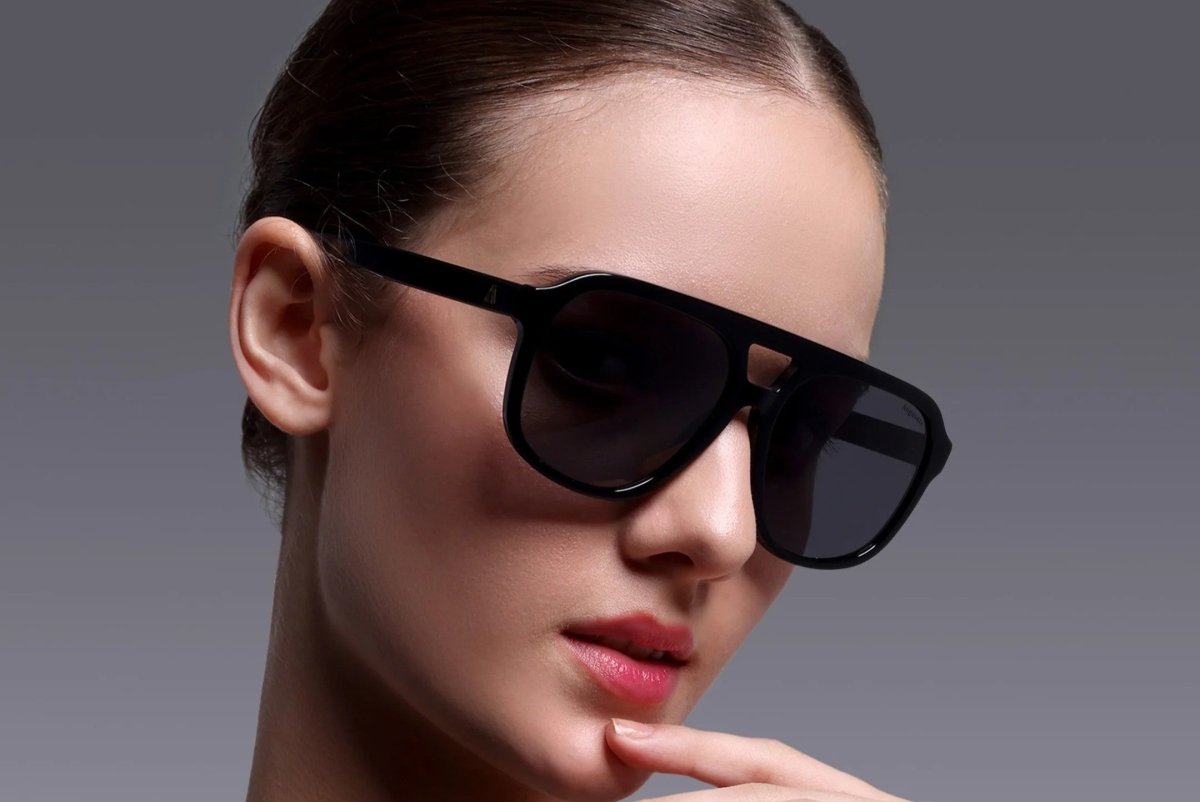A good pair of sunglasses does more than make you squint less. It blocks radiation that you can’t see, filters glare you didn’t know was tiring your eyes, and preserves long-term vision health, if the lens is doing what it claims to do.
Some lenses are dyed dark, but offer no real UV filtering. Others block light but distort colour or sharpen reflections. And a few do everything like protection, clarity, comfort, because they’re engineered that way from the inside out.
Here’s what makes a lens truly sun-safe, and how the materials, coatings, and construction actually work.
What Does “UV Protection” Really Mean?
Sunlight contains ultraviolet radiation, specifically UVA and UVB, which are the two types that matter most for your eyes.
UVA penetrates deep into the skin and eyes, accelerating aging and long-term cellular damage. UVB is more intense, linked to sunburn and direct eye damage like photokeratitis (a.k.a. sunburn of the cornea).
When a lens says “100% UV protection,” it means it blocks all wavelengths up to 400 nanometres, which is the cutoff for UV. But the catch is that not all dark lenses block UV, and not all UV-blocking lenses have to be dark.
The real work happens at the molecular level, either inside the lens material itself or in the coatings layered over it. That’s why it’s possible to have a clear lens that protects better than a deep-tinted knockoff.
Tints, Filters, and Optical Illusions
A dark tint does not guarantee sun safety. In fact, poorly made tinted lenses can be worse for your eyes than wearing nothing at all.
That’s why many low-cost sunglasses pose a hidden risk, they darken your view without actually filtering UV. This not only creates a false sense of safety but also allows more damage when your pupils dilate behind an unprotected lens.
The reason for that is that when your pupils are exposed to darkness (like behind a tinted lens), they dilate. If that tint doesn’t block UV properly, more harmful radiation enters than if your eyes had stayed constricted in full sunlight.
High-quality sun lenses separate “dimming” from “filtering.” They reduce visible light to ease comfort, but more importantly, they embed UV-blocking agents into the lens polymer or apply multi-layer coatings that reflect and absorb invisible radiation before it reaches the eye.
The good ones also maintain true colour perception, rather than casting the world in flat greys or overly warm tones. That’s especially important for driving, cycling, or anywhere depth and shade recognition matter.
Polarization: The Anti-Glare Mechanism
Another layer often confused with sun protection is polarization. It’s not UV, but about glare, the harsh, horizontal light that reflects off flat surfaces like roads, water, and car hoods.
Polarized lenses contain a special filter that blocks horizontally oriented light waves. That’s why they’re popular with anglers and drivers because they cut surface glare dramatically, making details crisper and reducing squint fatigue.
But again, polarization does not equal UV protection. Some polarized lenses come with zero UV filtering. Others combine both, a properly engineered sun lens will integrate UV blockers, a glare filter, and optical clarity all in one. And it won’t distort your screen when you check your phone in bright daylight.
Many cheap lenses add a basic polarizing film but skip UV protection entirely. So while the glare is reduced, your eyes remain exposed, especially dangerous if you're outdoors for long hours, thinking you're fully protected.
Material: CR-39, Polycarbonate, and Nylon
UV filtering is not only about coatings. Some base materials offer better natural protection than others.
CR-39:
A classic, optically clear plastic with excellent visual fidelity and scratch resistance. It accepts tints and coatings well, but on its own, it doesn’t block 100% UV, and it needs coating support.
Polycarbonate:
Naturally blocks most UV rays and is impact-resistant, making it a common choice in sports and safety eyewear. The trade-off is that it offers slightly lower optical clarity and higher distortion around the edges in cheap versions.
Nylon (PA):
Lightweight, flexible, and often used in performance lenses. It can be treated to offer full UV protection with good clarity and durability.
In short, the material you start with shapes how effective and comfortable the final lens will be. Budget lenses often cut corners on base materials, using low-grade plastic blends that distort vision, offer minimal UV resistance, and degrade faster under heat and sunlight.
Certification and Testing: What to Look For
Just because a tag says “UV400” doesn’t mean it delivers. Many cheap lenses copy the label but skip the testing entirely.
The problem with that is:
-
No certification. These lenses aren’t tested against any formal standards.
-
No accountability. They might block visible light, but still let harmful UV rays pass through.
-
False security. Dark tint tricks your eyes into dilating, which lets in even more unfiltered UV, making untested lenses worse than wearing none at all.
Instead, look for lenses that have been tested against international standards, such as ANSI Z80.3, EN ISO 12312-1, or Australia’s AS/NZS 1067. The latter is among the strictest, requiring lenses to pass both transmittance and protection benchmarks.
A reliable sun-safe lens will list its category (ranging from 0 to 4, where 3 is standard dark sun and 4 is for extreme brightness), include polarization information if applicable, and clearly indicate full-spectrum UV blocking.
The Bottom Line
Sun protection in eyewear is not how dark a lens looks, it’s how intelligently it handles light. True safety comes from a mix of material science, optical engineering, and the right coatings layered in the right order.
When everything is engineered with intent, like UV filters, polarization, scratch resistance, colour fidelity, the result is a lens that not only looks good in sunlight, but holds up under it.
That’s what separates real protection from cosmetic tint. And it’s also why the cheapest versions aren’t always the best deal. Uncertified lenses may save you money upfront, but they often skip key protections, which can cost you more in comfort, clarity, and long-term eye health.
That’s why a well-made sun lens earns its place in your everyday rotation.









